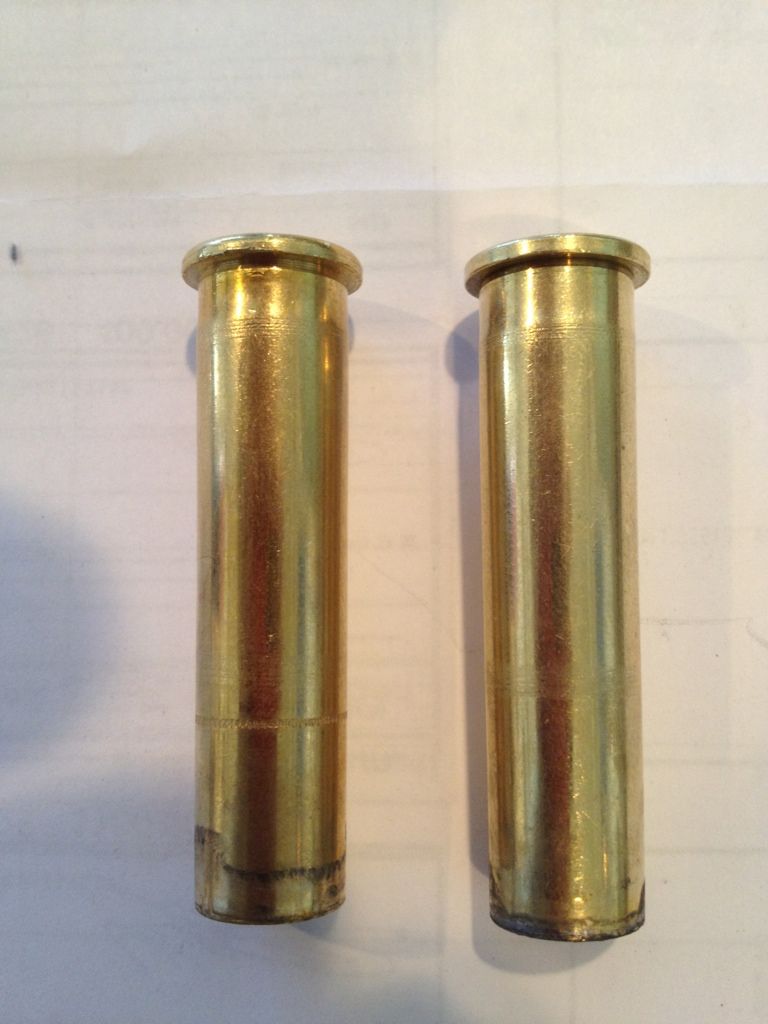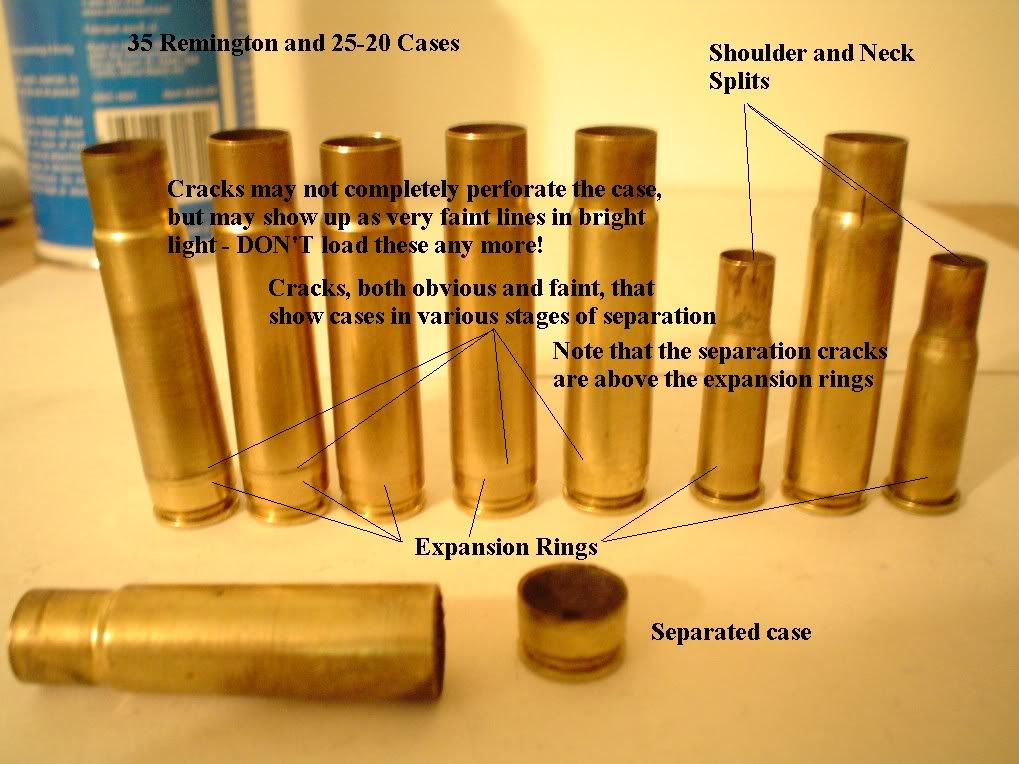I only have 2 loads through these 45/70 starline brass & 3 sizings.
Does the case on the left look like it's ready to blow to you, or is it just a tooling mark?
I rigged up a feeler from a paper clip to see if I can feel a flaw inside the case, but I can't feel anything.
I'm not interested in blowing my hands off, what do you think?
![]()
Edit" I've just been hand cleaning, but I do have an ultrasonic cleaner - should I throw them in and then see if the line remains?
Does the case on the left look like it's ready to blow to you, or is it just a tooling mark?
I rigged up a feeler from a paper clip to see if I can feel a flaw inside the case, but I can't feel anything.
I'm not interested in blowing my hands off, what do you think?

Edit" I've just been hand cleaning, but I do have an ultrasonic cleaner - should I throw them in and then see if the line remains?






